
While I might come across as calm and collected, my mind is usually busy replaying every experience I’ve ever had in my life, and I often liken the inside of my head to a snow globe that never settles down. As I mentally navigate this internal storm, I judge each situation and beat myself up for not saying or doing the “right” thing in a particular moment. Intellectually, I know this rumination is counterproductive because I don’t have a time machine to go back and do things differently. If you, like me, have anxiety that interferes with your daily life, these seven visualization techniques to help you feel less anxious can provide a respite from your overactive mind.
When you’re overtaken by anxious thoughts, your mind is visualizing past or future situations, which only keeps you trapped inside the proverbial snow globe. While this is an oversimplification — because anxiety is deeply rooted inside of your brain — replacing those negative associations with positive ones can help you calm down. “Visualization is similar to mental rehearsal, but visualization is based on imagery or metaphor as opposed to mental rehearsal of an actual event,” Dr. Deann Ware explained in the Psychologist’s Guide To Emotional Well Being on the website Daily Shoring.
“Visualization is especially useful for intrusive thoughts — these are the thoughts and images that pop into your head and cause you distress.” Sound familiar? These visualization techniques from Barbara Davidson via Net Credit, and backed up by neuroscience, can help the snow globe inside your mind settle down so it feels more like a winter wonderland and less like a blizzard.
1. The Double-Paned Window Technique
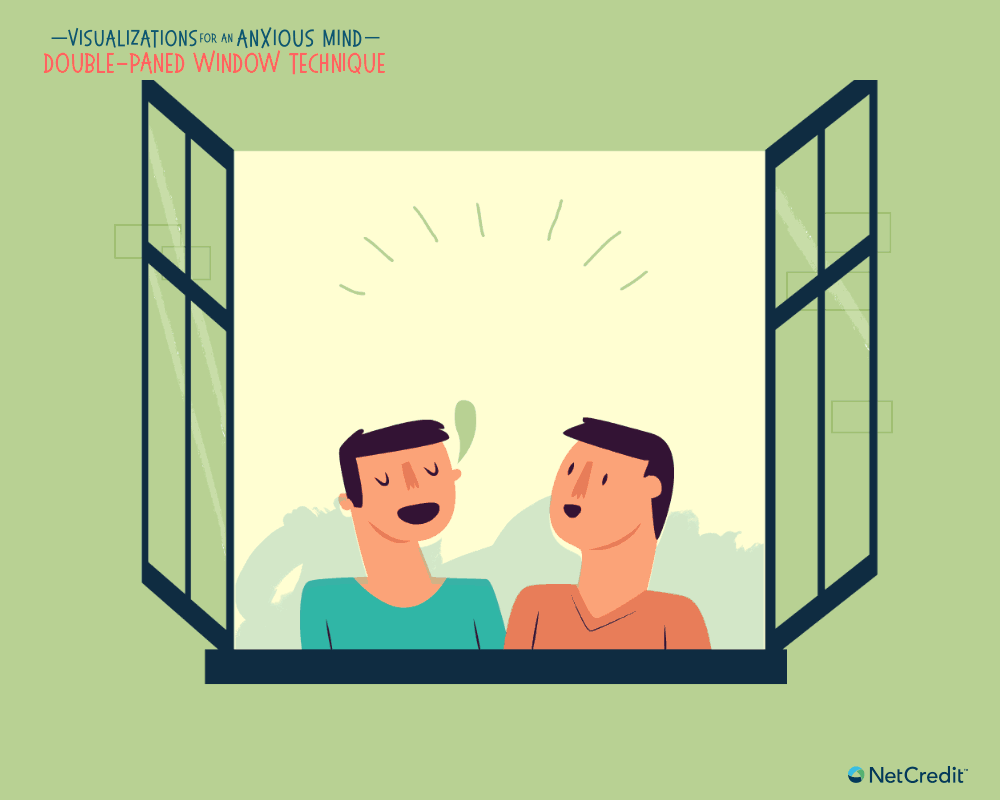
This technique is helpful when you’re tossing and turning when you should be sleeping because you’re unable to quiet your mind. Picture your mind as an open double-paned window that’s exposing you to noise from the street. Imagine yourself walking toward the window and calmly closing it to block that distracting outside noise. This gives your brain a cue that the window is now closed, and it’s time to be quiet.
2. The Serene Beach Technique
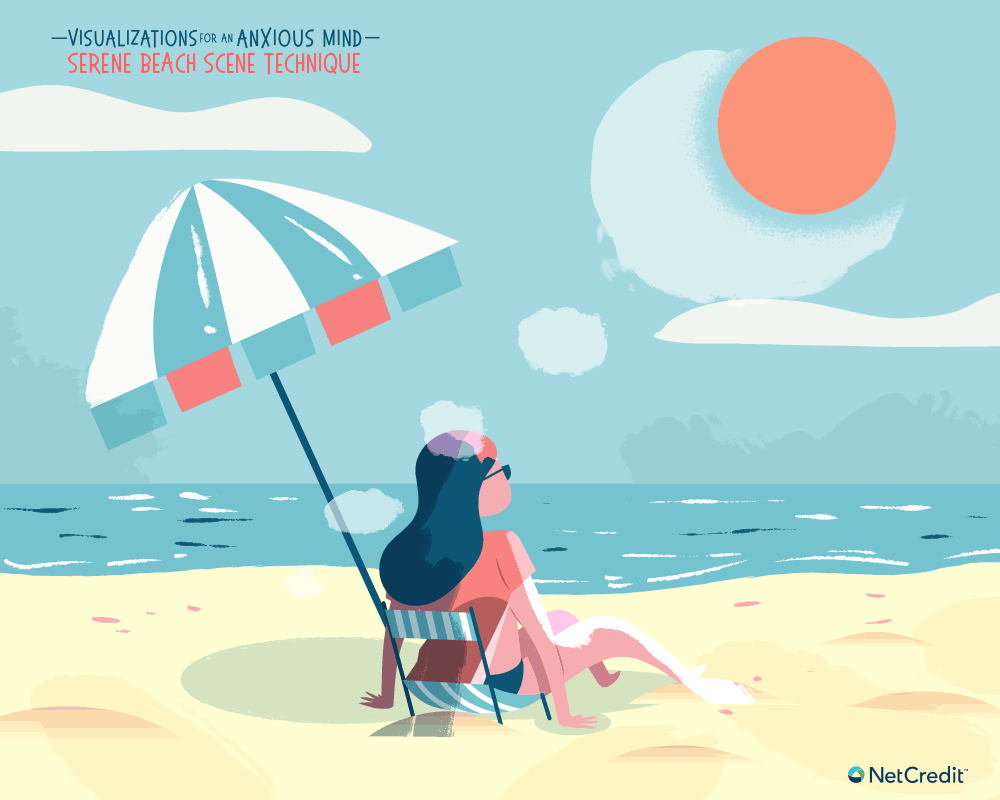
OK, this one might sound a little hokey, and not everyone loves the beach. I actually used the serene beach technique when I underwent hypnosis for migraines, and it did help me calm down. If beaches aren’t your jam, picture another location that makes you feel calm. Imagine yourself in your chosen place. Feel the ground under your feet, give your body permission to release any tension it's holding onto, soften your gaze, and monitor your breath until you begin to feel more relaxed.
3. The Stop Sign Technique
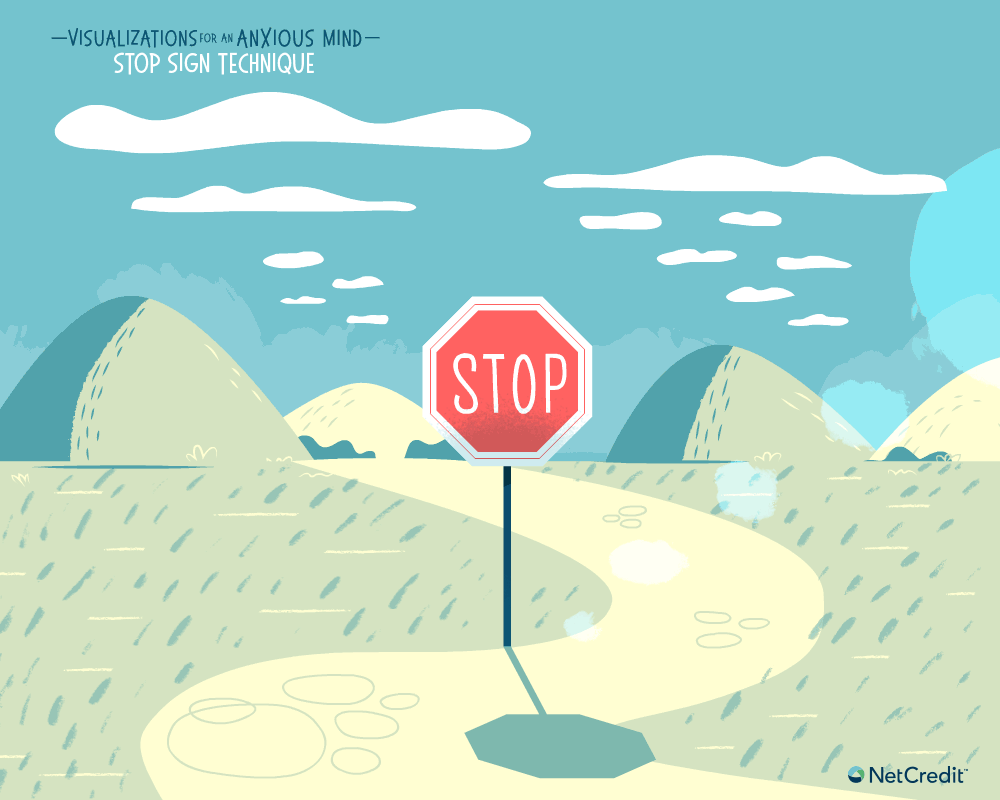
If anxiety has your brain constantly imagining the worst case scenario, it’s easy to get stuck in a cycle of mental panic. While it’s good to be prepared, convincing yourself that the worst is going to happen can be a form of self-sabotage. Want to stop? When you start going down this dark and twisty tunnel, picture an empty road with a bright red stop sign. Focus on the sign, read it, and repeat the word “stop” to yourself until you begin to feel that sense of impending doom lift like a clearing fog.
4. The Blender Technique
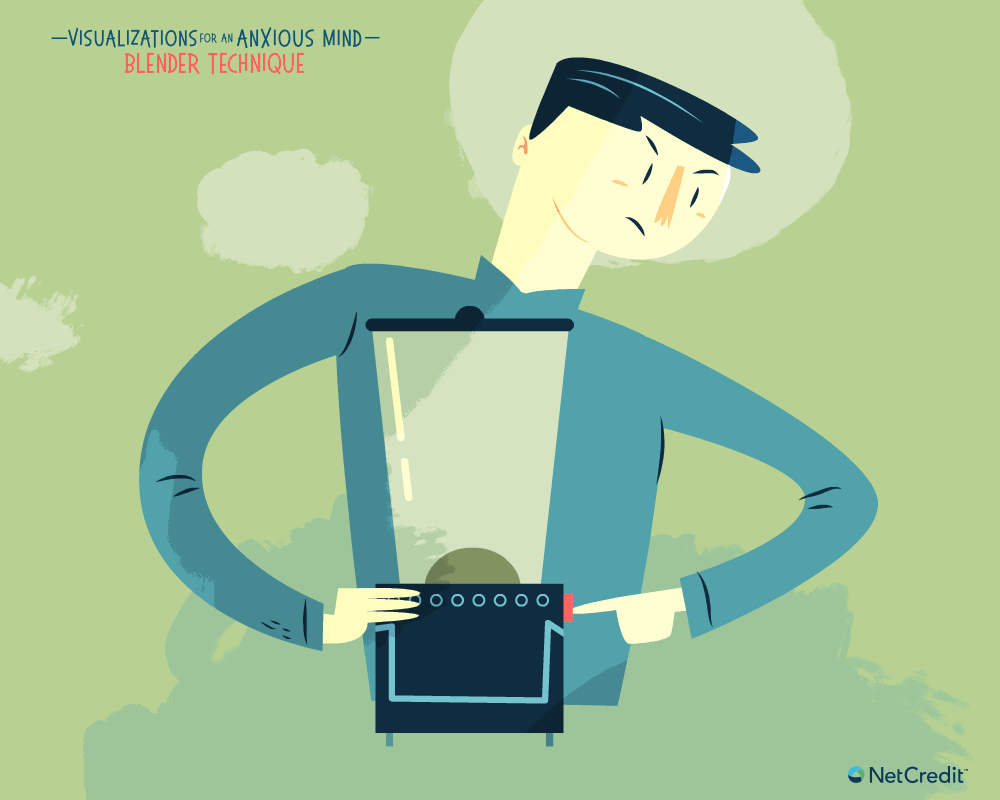
The blender technique is similar to the snow globe metaphor, and it’s helpful when you start to feel overwhelmed. To be honest, in the all the years I felt like my mind was a cloudy snow globe, I never even considered that I could ask it to settle down. Learning this technique was a bit of an ah-ha moment for me. Imagine your brain as a snow globe that’s been shaken up, or a blender that’s been switched on. Mentally watch the snow globe settle into a serene winter scene, or imagine turning the blender off. After everything settles down, you should be able to focus.
5. The Ball Of Yarn Technique

Aside from making you feel mentally flustered, anxiety can also cause a host of physical symptoms. If your back, neck, and shoulders feel tight and clenched after a long day, the ball of yarn technique can help relieve some of your physical stress. This one is particularly helpful because you can not only visualize it, you can actually do it. Imagine a ball of yarn, or use an actual ball of yarn, hold the loose string at the beginning of the ball, and push the ball forward to unroll it. As the ball of yarn unrolls, imagine your muscles relaxing at the same time. Do this as many times as it takes to feel more relaxed. If it helps to imagine that you’re a cat chasing the ball of yarn, go for it.
6. The Blue Light Technique
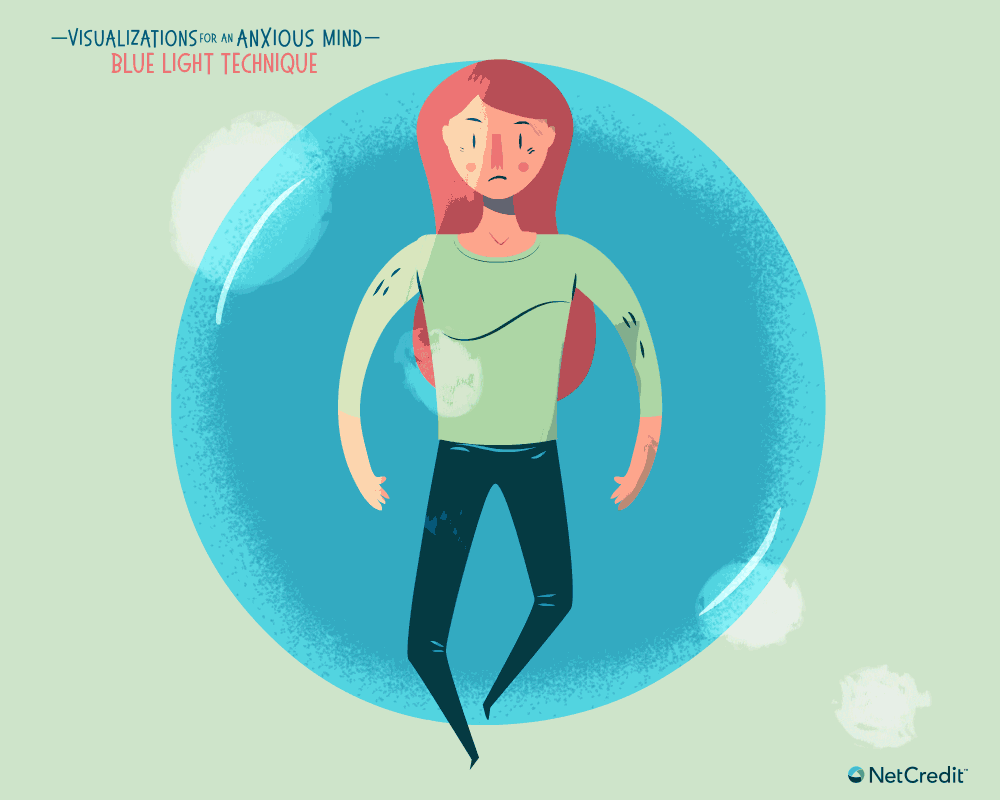
Light visualization techniques are a great way to decompress before or after a stressful event. Picture yourself surrounded by a glowing orb of blue light and focus on breathing the light into your body. Next, exhale deeply and imagine that the air leaving your body is a thick smoke containing all of the stress you’ve been carrying around. Repeat this as many times as necessary until you feel you have expelled as much tension as possible and your body is full of healing light. I find that it’s helpful to repeat the mantra “I am calm; I am light” while doing this visualization.
7. The Quiet Is A Liquid Technique

If you’ve tried everything else to quiet your mind to no avail, this technique is pretty useful. Visualize silence as water filling the inside of your head like water filling up a bathtub. When the water gets to the top, imagine all of that excess internal chatter being drowned out by the peace and quiet of the healing water.
The reason visualization works is because it gives your mind something else to focus on besides your anxiety. Just deviating from your anxious thoughts for a few minutes at a time can help redirect anxious energy. While it’s not a cure, it’s a useful practice to add to your anti-anxiety toolbox. You can complete these visualization techniques as often as you like, and just like everything else, the more you do them the easier they’ll be.
